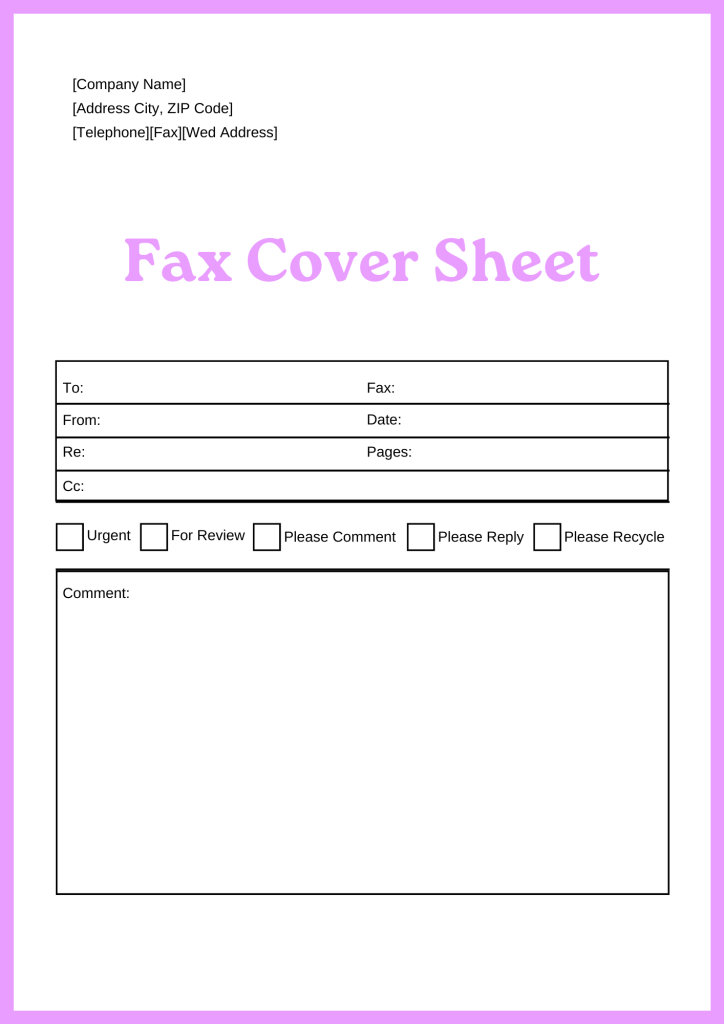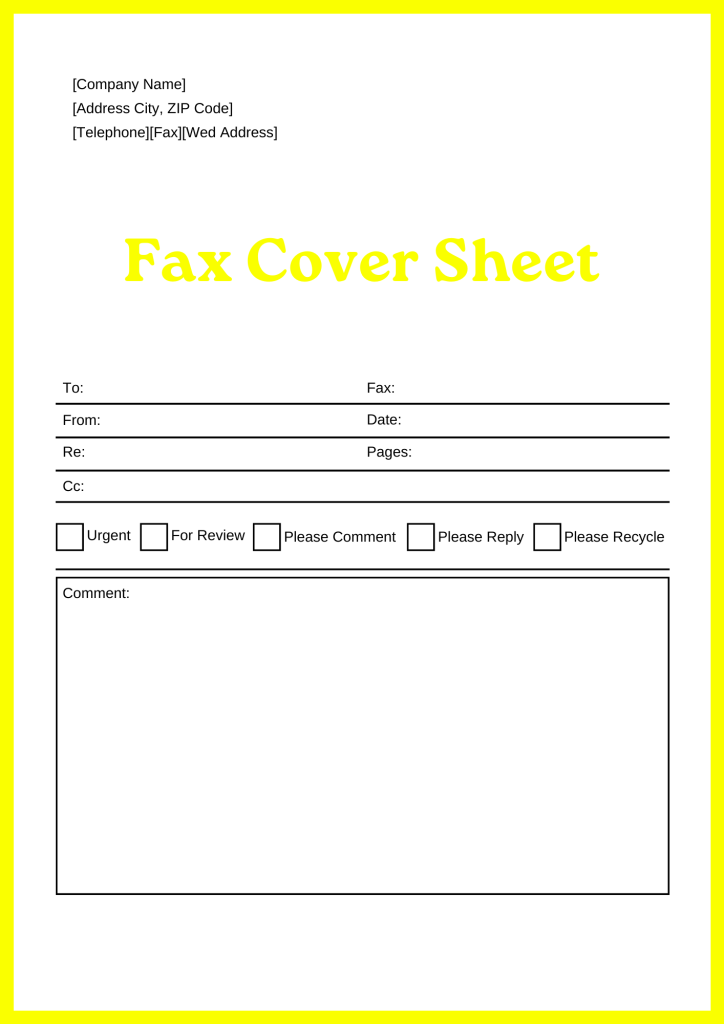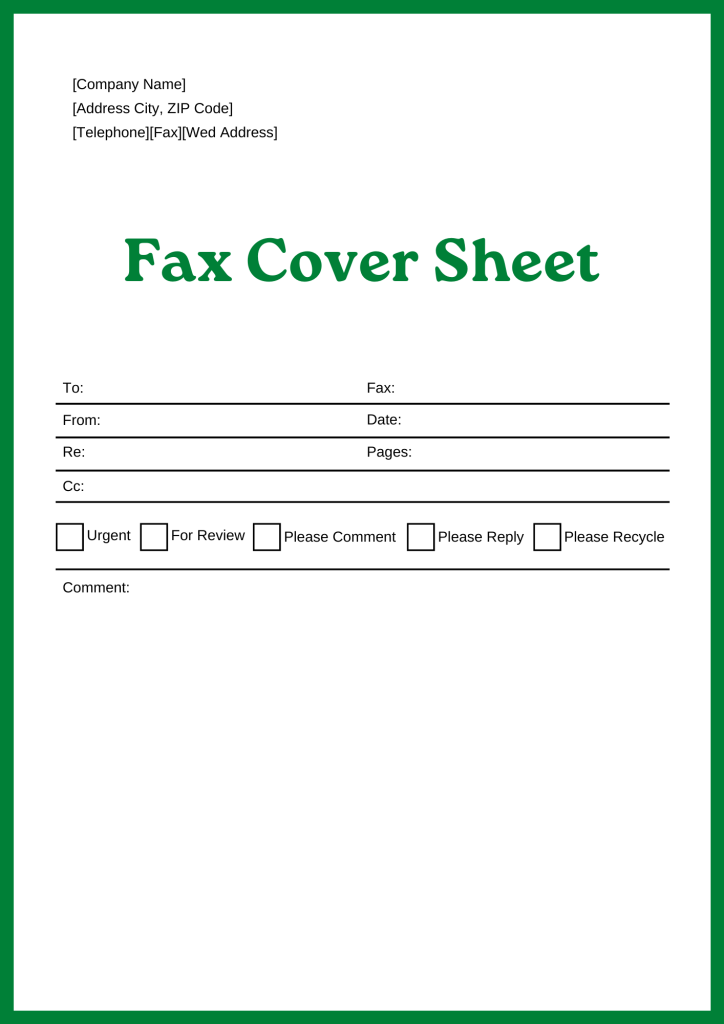It serves as a front page that ensures the recipient of the Aetna Fax Cover Sheet knows the intent, source, and context of the transmitted documents. This cover sheet includes vital information such as the sender’s name, contact details, the recipient department or individual at Aetna, the number of pages being sent, including the cover, the purpose of the fax, and any applicable identifiers like provider ID, patient ID, or claim number.
Using a fax cover sheet is standard practice in healthcare-related communication, especially for HIPAA compliance. The Aetna Fax Cover Sheet helps ensure that sensitive personal health information (PHI) is directed to the correct party and handled securely.
It usually begins with a clear title such as “Aetna Fax Cover Sheet,” followed by labeled fields that the sender must complete before faxing. These fields typically include the date of transmission, the sender’s organization or provider name, phone, and fax number, and the recipient’s department or name at Aetna.
- Google Docs Fax Cover Sheet
- Make a Simple Cover Letter For Fax
- HIPAA Fax Cover Sheet
- FVAP Fax Cover Sheet
- Generic Fax Cover Sheet
- Standard Fax Cover Sheet
- Health-e-Arizona Fax Cover Sheet
Aetna Fax Cover Sheet
Many cover sheets also have a checkbox or field indicating the urgency or confidentiality of the message. A statement like “CONFIDENTIAL: This fax contains privileged and confidential information intended only for the use of the individual or entity named above” is often included, which warns unintended recipients about legal boundaries regarding disclosure.
In some cases, senders also include a short message or notes section where additional context can be added, such as “Authorization documents attached” or “Supporting medical records for appeal.”
Aetna may have specific fax numbers for different departments, such as claims, appeals, pharmacy prior authorizations, credentialing, or behavioral health. Including the correct destination on the cover sheet is crucial to avoid delays or misrouting of documents. Most healthcare providers maintain templates of the Aetna Fax Cover Sheet to ensure standardization and accuracy when submitting forms or patient records.
Printable Aetna Fax Cover Sheet
In digital workflows, especially for providers using electronic health record (EHR) systems, the Aetna Fax Cover Sheet can often be auto-generated and attached to outbound faxes. These systems may automatically populate key fields based on the patient or claim being referenced.
For providers submitting requests manually, downloadable PDF versions of the Aetna Fax Cover Sheet are usually available from Aetna’s official website or via provider portals.
For example, missing claim numbers or patient identifiers could result in delays, rejections, or the need to resend the fax. In urgent cases, like prior authorization for medication or inpatient admissions, such errors can have a significant impact on patient care and outcomes. Therefore, verifying the fax number, attaching all pages, and confirming delivery receipt—either via a fax confirmation report or phone follow-up—is standard best practice.
- How to Send Faxes from an iPad
- Basic Fax Cover Sheet
- Professional Fax Cover Sheet
- Confidential Fax Cover Sheet
- Personal Fax Cover Sheet
- Fax Filing Cover Sheet
Free Aetna Fax Cover Sheet Template
Aetna may update its fax numbers or department handling processes periodically, so it’s important for providers and administrative staff to verify that they are using the most current information. Many providers maintain a contact sheet or shared directory with updated Aetna fax numbers, categorized by service type.
Using a dedicated Aetna Fax Cover Sheet is more than just a formal requirement; it is a safeguard in medical administration that ensures proper routing, protects patient privacy, and speeds up the processing of clinical and administrative requests.
Whether used for claims follow-up, medical necessity documentation, coordination of benefits, or prior authorization requests, this document plays a critical role in efficient and compliant communication between providers and the insurance company.


